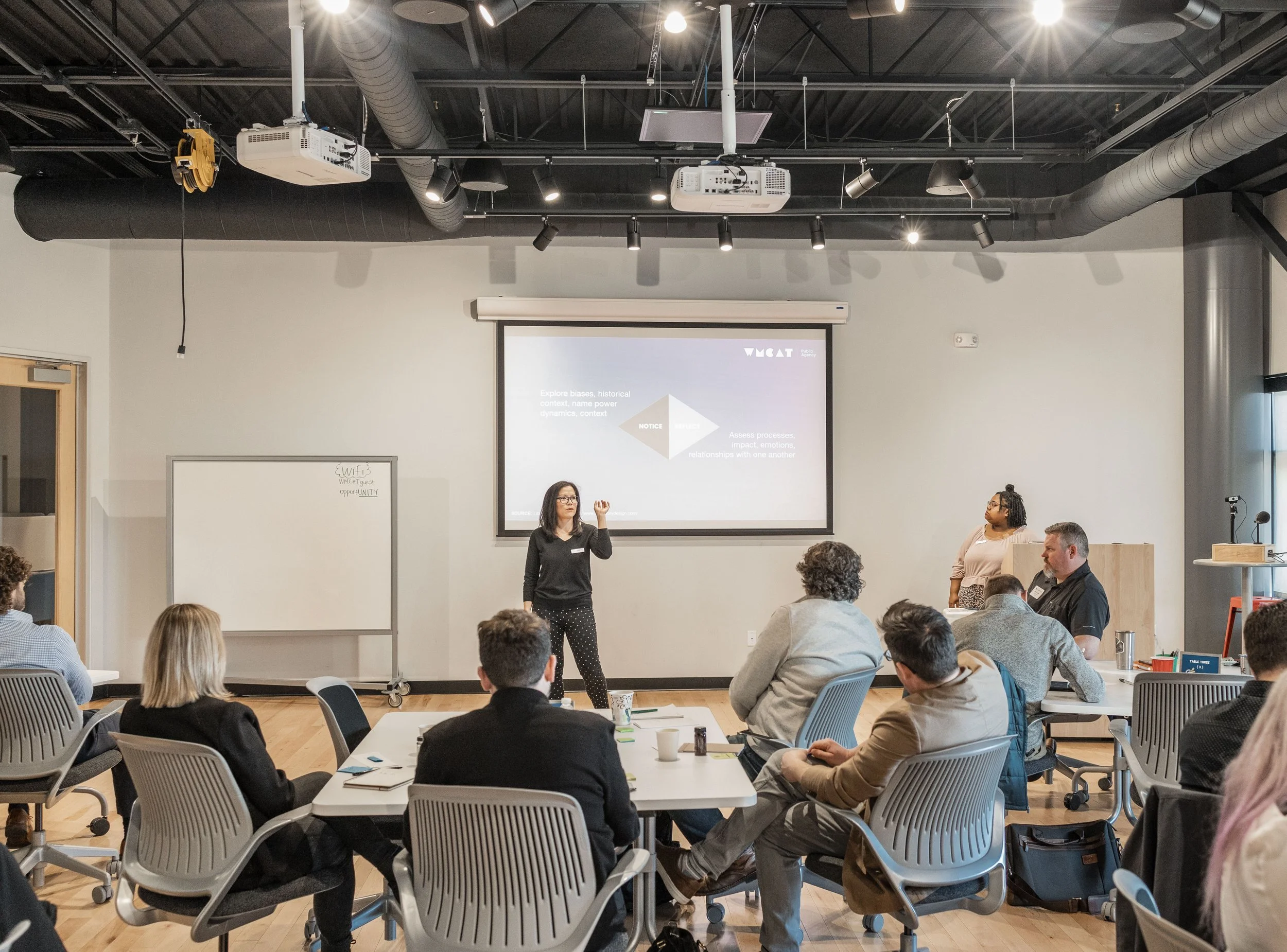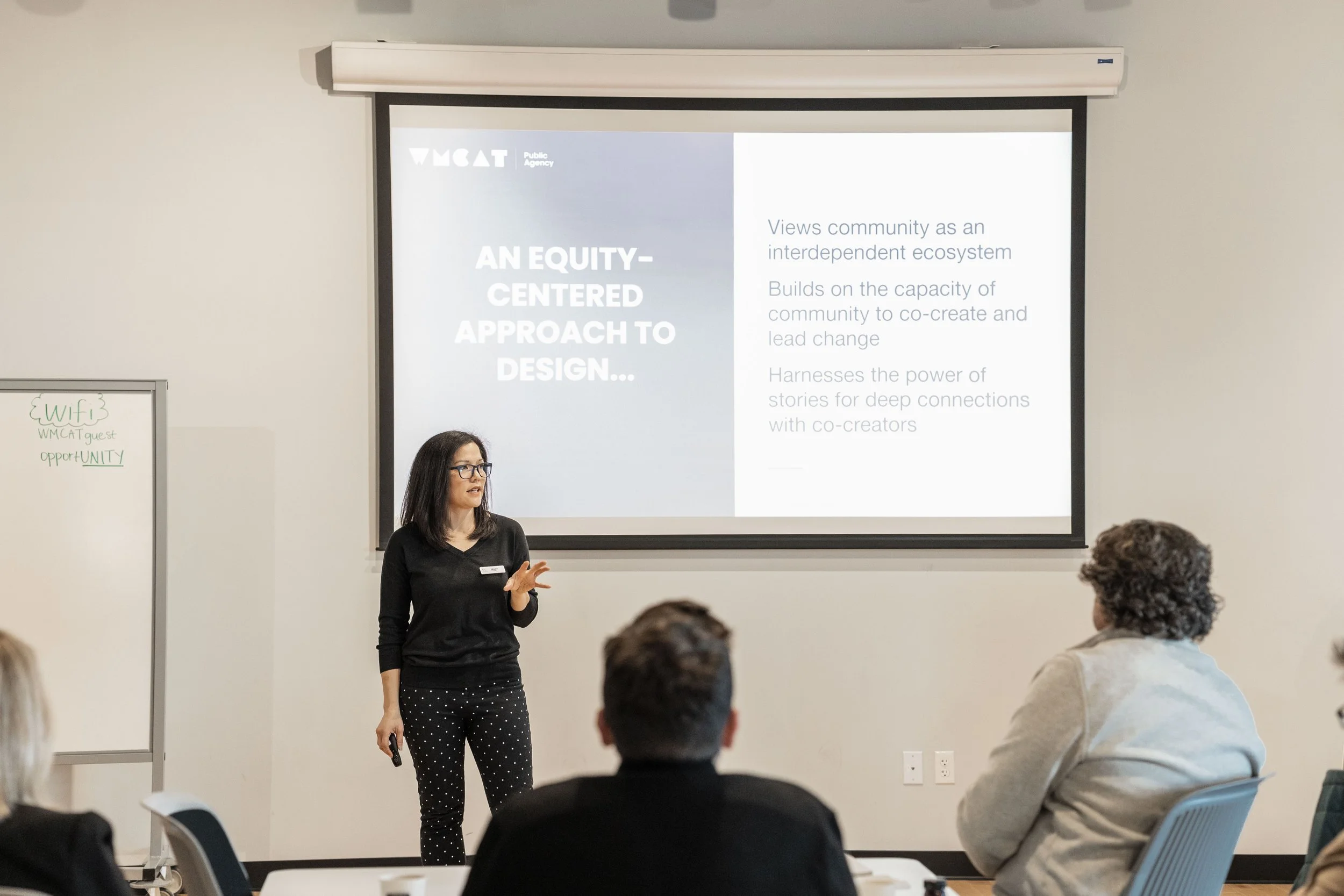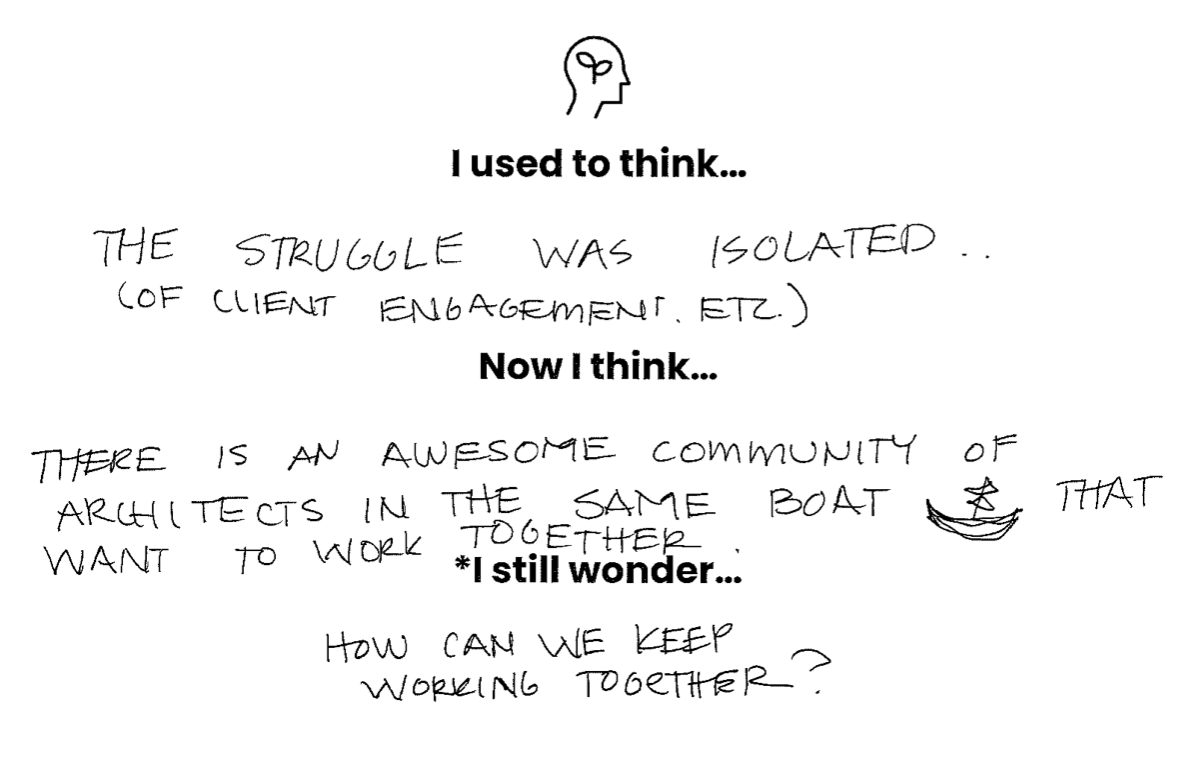A Future Built on Listening
by Matthew VanSweden
The Role of Architects
Architects work at the inflection point between investors and users or - more candidly put - between people and power. Enlisted to create spaces from voids, architects are quite literally shaping the future of communities. The adage holds, “with great authority comes great responsibility.” Historically, dollars have driven the development of neighborhoods and cities. Outside investors appear seemingly out of thin air with capital to build structures that reshape communities, entrusting architects to bridge the gap between functional design, financial demands, and stakeholder concerns.
Over the past decade, it’s become even more evident that our environments shape our lived experiences. From growing research around biophilia to healthy buildings to renewable materials to circular economy to socioeconomic diversity – we realize that what we build isn’t nearly as important as why we build. In 2019, the American Institute of Architects highlighted Climate Action as a key priority in the field and added Racial Justice as a critical consideration last year. At the intersection of our responsibility to the environment and our accountability to our neighbors is Climate Justice. We asked, “how do we move from community engagement to community empowerment?”
At the crux of effective empowerment is effective listening. If architects are meant to engage with and respond to various stakeholders throughout the design process, how are we honing these abilities? Do we truly understand how to hear, respond to, and validate all stakeholders? How do we listen to learn and then apply what we’ve learned to practical design decisions? How can we further value and facilitate community stakeholders throughout the design process?
Crafting a Workshop
In the wake of these questions, I joined forces with Trudy Ngo-Brown, and Megan Feenstra Wall to develop and facilitate a two-part workshop this spring entitled “Listening to Learn.” Trudy is the Director of Public Agency at West Michigan Center for Arts and Technology and works to help organizations think about how design influences work, service, and communities. Megan brings immense heritage and experience into the architectural sphere, working as Principal and Owner of Mathison|Mathison Architects and as former Board President for AIA Grand Rapids. Together, we wanted to craft a way to approach these questions.
This workshop intentionally pulled together architects with a wide range of experiences, influence, and roles in firms to explore how we listen and who we listen to. So many things influence how well we listen at any given moment - many of which are unseen or uncontrollable from moment to moment. Together, we explored aspects of our identity and experiences that might shape how we listen, such as worldview, trauma, biases, mood, and our subconscious. Building awareness of these influences allows us to be mindful of the lens through which we filter information, better equipping ourselves to take a neutral stance when listening and making decisions.
Our discussion around who we listen to led to a deep exploration of power propositions in design. We asked ourselves if we are designing at, for, or with people – with the gold standard being a step further: design led by people. With these frameworks in mind, we defined practical ways to transform the discovery processes at our various firms to account for more stakeholders, more authority, and more investment in the listening phase.
What We Learned
This workshop confirmed that conversations on equity and empathy are valuable across all industries. The resounding response from participants was, “how can we do more of this?” We must view empathy as a learned skill, like all other skills, and it’s a tool that requires education, refinement, investment, and practice. Changing hearts and minds is a process, not simply a two-day workshop fix. As facilitators, we hope this workshop paves the way for more of its kind and begins trickling down to how we build contracts and plan scopes of work. Building communities has a generational impact, a responsibility that deserves the utmost awareness and inclusion of those who will carry the blessing - or burden - of our design. May we learn to listen well.











